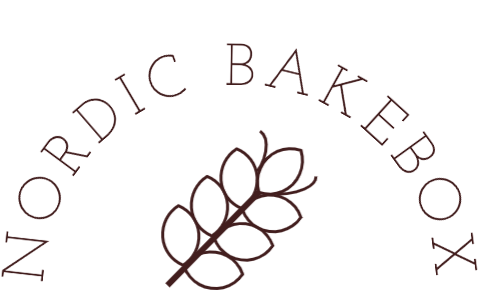Craving the warm, comforting aroma of freshly baked cinnamon buns to kickstart your morning? Look no further – we've got a simple and efficient way to achieve that freshly baked goodness right in your own kitchen.
First some tips for the dough making.
Bun doughs can be cold-proofed in the fridge overnight, as shaped buns. Genarally the longer the proofing time of a dough, the tastier the buns that stay soft and juicy longer.
For vegan buns You can easily replace the liquid in the dough with plant based milk, and the butter for plantbased margarine, it also makes really tasty buns.
Use room temperatured soft butter! Don't use melted butter, as it becomes liquid in the dough, which requires more flour to handle, and more flour equals dry buns!
Don't add more flour once the dough is finnished kneading. Then the flour won't get a chance to be worked into the dough and create gluten development which will give you dry buns. If the dough is loose, then put it in the fridge for an hour and it will be easier to handle.
Rember to always do a gluten test to see if it is ready before you stop kneading, if the dough can't be stretched and breaks, it needs more kneading. Good gluten strength means that your dough will be able to rise better, and will give you fluffier and softer buns.
To speed up the bun dough.
Use room temperature ingredients. Then your dough will quickly reach the right temperature, and it's when the dough room temperature the yeast will activate.
When proofing you can put a plastic wrap or a plastic bag over the oven tray with your buns so that it gets warm and cozy underneath, the dough likes a warm and humid enviroment.
To really speed it up, make a proofing room in you oven. Place the trays in the cold oven with a cup of boiling water and let them proof in the steam. It's a good trick to use if you want to give the buns an extra boost, but keep an eye on your buns so they don’t over proof!
Cold proofing or thawing already baked buns?
Thawing already baked buns:
Get fresh buns in the morning by immediately freezing them after they have been baked. Then when you want to enjoy them, here’s a trick to thaw them for ultimate fresh buns.
Preheat your oven to 250 degrees Celsius (or use an airfryer) While the oven is heating up, take your frozen cinnamon buns out of the freezer. Before placing them in the oven, brush the buns with a bit of milk.
Place the buns on a baking sheet and bake them for just 4 minutes. After the short baking time, remove the buns from the oven and let them finish thawing under a kitchen towel.
It may take about 10 minutes for the buns to fully thaw, so be patient and resist the temptation to dive in too soon.
With this quick and easy method, you can enjoy the irresistible taste and aroma of freshly baked cinnamon buns for breakfast without the hassle of starting from scratch.
Cold proofing:
Cold proofing is how bakeries do it. They put their unbaked buns right after they've been bade and let them proof in the fridge overnight so that they can bake them when they start working.
There are several advantages to cold proofing. Firstly, it's good for the dough as it slowly develops and rises. Keep in mind that depending on how long the dough will proof, you might have to reduce the amount of yeast. The less yeast you have, the longer you can proof the dough. But if you're just proofing overnight, you don't have to reduce the yeast, you can use the same amount, at least if your fridge maintains a normal temperature below 5 degrees Celsius.
Your dough should have risen overnight, but it may also be that you don't notice much of a difference. That would be if you have a very cold fridge. But there's nothing to worry about, just because the dough hasn't risen doesn't mean it is ruined. And regardless of whether the dough has risen a lot or a little, it then needs a little time at room temperature before it's baked.
If they haven’t risen at all during the night, let them proof for about hour in the kitchen before baking. So proofing dough in the fridge overnight is not necessarily a faster way to get the buns on the table, but might lead to tastier buns!
